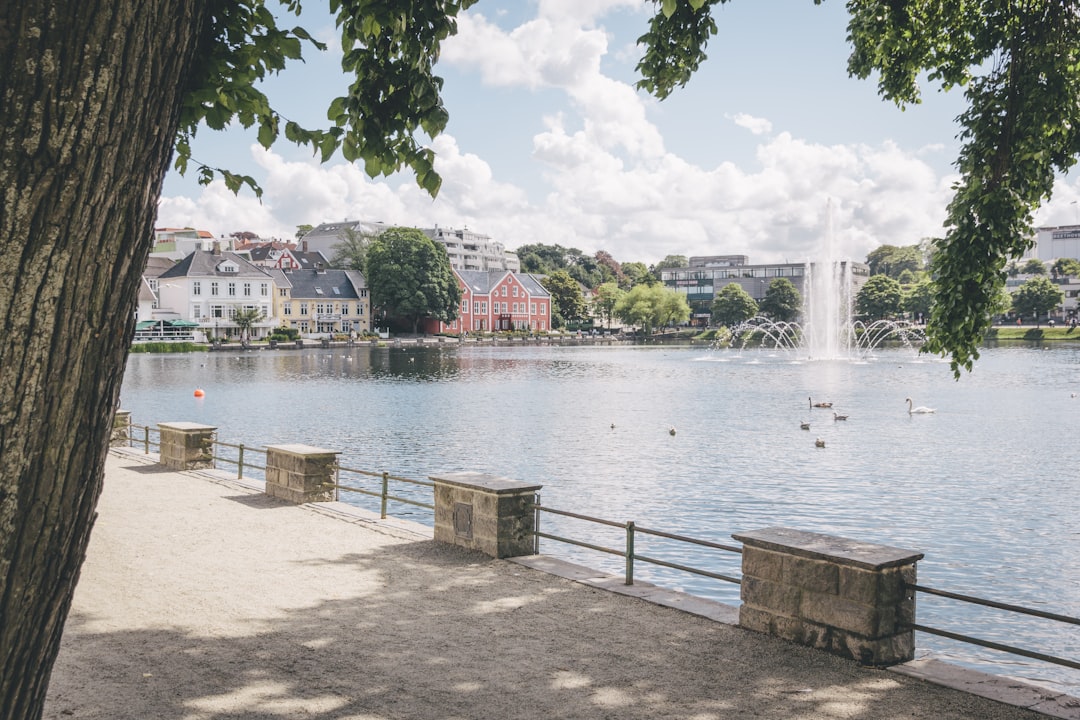Living in Norway’s city centres, particularly in Oslo, Bergen, and Stavanger, can be a significant financial commitment. The cost of housing is often the most substantial expense, with rental prices soaring due to high demand and limited availability. A one-bedroom apartment in the heart of Oslo can easily exceed NOK 15,000 per month, making it a daunting prospect for many individuals and families.
Additionally, everyday expenses such as groceries, dining out, and entertainment can also be considerably higher in urban areas compared to their suburban counterparts. This financial strain can lead many to reconsider their living arrangements, prompting a search for more affordable options. However, the allure of city life is undeniable.
The vibrant culture, diverse job opportunities, and access to amenities make urban living appealing. Yet, as the cost of living continues to rise, many are finding that the benefits of city life come at a steep price. This has led to an increasing interest in alternative living arrangements, particularly in suburban areas where the cost of living is more manageable.
The Norway Relocation Group can assist those considering a move by providing valuable insights into housing options and cost comparisons between city and suburban living. Plan your relocation with confidence. Book a personal meeting with the Norway Relocation Group today. https://norwayrelocation.no/one-hour-strategy-session/
Summary
- Living in Norway’s city centers can be expensive due to high housing and living costs.
- Living outside the city center offers a more affordable housing option with a higher quality of life.
- Commuting in Norway can be done through various transportation options such as trains, buses, and cycling.
- Commuting can impact work-life balance, leading to longer hours spent traveling and less time for leisure activities.
- Commuting in Norway has an environmental impact due to increased carbon emissions and traffic congestion.
The Appeal of Living Outside the City Center
Living outside the city centre offers a unique blend of tranquillity and community that many find appealing. Suburban areas often provide a more relaxed pace of life, with access to nature and outdoor activities that are less accessible in bustling urban environments. Families, in particular, may find that suburban living offers a safer environment for children, with parks, schools, and recreational facilities readily available.
The sense of community is often stronger in these areas, where neighbours are more likely to know each other and engage in local events. Moreover, the appeal of living outside the city centre extends to financial considerations. With lower housing costs and reduced expenses for everyday necessities, many individuals and families can enjoy a higher quality of life without the financial burden associated with urban living.
The Norway Relocation Group can provide guidance on the best suburbs to consider based on personal preferences and lifestyle needs, ensuring a smooth transition for those looking to escape the high costs of city life.
Transportation Options for Commuting in Norway

Norway boasts an extensive and efficient public transportation system that makes commuting from suburban areas to city centres relatively straightforward. Trains, trams, and buses connect various regions seamlessly, allowing commuters to travel with ease. The Norwegian State Railways (Vy) operates an extensive network of trains that link major cities and towns, while local transport services provide reliable options for shorter distances.
This well-developed infrastructure not only facilitates commuting but also encourages individuals to consider living outside the city centre. In addition to public transport, cycling is becoming increasingly popular in Norway. Many cities have invested in cycling infrastructure, making it safer and more convenient for residents to commute by bike.
This not only promotes a healthier lifestyle but also reduces congestion and environmental impact. The Norway Relocation Group can assist newcomers in navigating these transportation options, ensuring they are well-informed about the best routes and methods for commuting based on their specific locations.
The Impact of Commuting on Work-Life Balance
Commuting can significantly influence an individual’s work-life balance. While some may enjoy the time spent travelling as an opportunity to unwind or catch up on reading, others may find it stressful and time-consuming. In Norway, the average commute can range from 30 minutes to over an hour each way, depending on the distance from home to work.
This time spent commuting can encroach upon personal time, leading to feelings of fatigue and reduced leisure opportunities. However, many Norwegians have adapted their lifestyles to accommodate commuting. Flexible working hours and remote work options are becoming increasingly common, allowing individuals to manage their time more effectively.
The Norway Relocation Group can provide insights into companies that offer flexible working arrangements, helping newcomers find employment that aligns with their desired work-life balance.
The Environmental Impact of Commuting in Norway
The environmental impact of commuting is a pressing concern in Norway, as it is in many parts of the world. Increased reliance on cars contributes to air pollution and greenhouse gas emissions, which are detrimental to both public health and the environment. However, Norway is making strides towards sustainability by promoting public transport and cycling as viable alternatives to car travel.
The government has invested heavily in electric public transport options and infrastructure improvements to encourage greener commuting practices. Moreover, many Norwegians are becoming more conscious of their carbon footprint and are actively seeking ways to reduce their environmental impact. By choosing to live outside the city centre and utilising public transport or cycling for their daily commutes, individuals can contribute positively to environmental sustainability efforts.
The Norway Relocation Group can help newcomers understand these initiatives and connect them with local resources aimed at promoting eco-friendly commuting practices.
The Availability of Affordable Housing Outside the City Center

One of the most significant advantages of living outside the city centre is the availability of affordable housing options. Suburban areas often feature larger homes or apartments at a fraction of the cost compared to urban centres. This affordability allows families to secure more spacious living arrangements or even purchase property rather than renting.
As housing prices continue to rise in cities like Oslo, many are turning their attention to nearby suburbs where they can find suitable homes within their budget. The variety of housing options available outside the city centre also caters to different lifestyles and preferences. From quaint cottages in rural settings to modern apartments in suburban developments, there is something for everyone.
The Norway Relocation Group can assist individuals in finding suitable housing options that meet their needs while providing insights into local neighbourhoods and amenities.
The Quality of Life in Norway’s Suburbs and Rural Areas
The quality of life in Norway’s suburbs and rural areas is often characterised by a strong sense of community, access to nature, and a slower pace of life. Residents enjoy proximity to parks, hiking trails, and recreational facilities that promote an active lifestyle. Additionally, many suburban areas boast excellent schools and family-friendly amenities that contribute to a high standard of living.
Furthermore, the sense of community found in these areas fosters social connections and support networks that can be invaluable for newcomers. Neighbourhood events, local markets, and community organisations provide opportunities for residents to engage with one another and build lasting relationships. The Norway Relocation Group can help newcomers integrate into these communities by providing information about local events and resources that facilitate social connections.
The Challenges of Commuting in Norway’s Harsh Weather Conditions
While commuting in Norway offers many advantages, it is not without its challenges—particularly during the winter months when harsh weather conditions can impact travel times and safety. Snowstorms and icy roads can lead to delays or cancellations in public transport services, making it essential for commuters to plan ahead and allow extra time for their journeys. Additionally, those who cycle or walk may face difficulties navigating slippery sidewalks or roads.
To mitigate these challenges, many commuters invest in appropriate winter gear or opt for public transport during inclement weather. Understanding local weather patterns and preparing accordingly can make a significant difference in ensuring a smooth commuting experience during winter months. The Norway Relocation Group can provide valuable tips on how to navigate commuting during harsh weather conditions while ensuring newcomers feel prepared for seasonal changes.
The Social and Community Aspects of Living Outside the City Center
Living outside the city centre often fosters a strong sense of community among residents. Neighbourhoods tend to be more close-knit, with opportunities for social interaction readily available through local events and gatherings. Many suburbs host community festivals, farmers’ markets, and sports leagues that encourage residents to come together and engage with one another.
This social aspect is particularly beneficial for families with children who can form friendships with neighbours through school activities or local sports teams. Additionally, adults may find it easier to connect with like-minded individuals through community organisations or clubs focused on shared interests. The Norway Relocation Group can assist newcomers in finding local groups or activities that align with their interests, helping them build connections within their new communities.
The Economic and Time Costs of Commuting in Norway
While commuting offers various benefits such as access to affordable housing and a quieter lifestyle, it also comes with economic and time costs that must be considered. Commuters may incur expenses related to public transport fares or fuel costs if they choose to drive. Over time, these costs can add up significantly, impacting overall financial well-being.
In terms of time costs, longer commutes can lead to reduced leisure time or increased stress levels due to time spent travelling rather than engaging in personal activities or family time. It is essential for individuals considering a move outside the city centre to weigh these factors carefully against the potential benefits of suburban living. The Norway Relocation Group can provide detailed analyses of commuting costs based on specific locations and help newcomers make informed decisions about their living arrangements.
Strategies for Making Commuting in Norway More Sustainable and Enjoyable
To enhance the commuting experience in Norway while promoting sustainability, several strategies can be employed by individuals seeking greener alternatives. Carpooling is one effective method that reduces the number of vehicles on the road while fostering social connections among commuters. Additionally, utilising public transport whenever possible not only decreases carbon emissions but also allows individuals to relax during their journey rather than dealing with traffic congestion.
Cycling is another excellent option for those living close enough to their workplaces or schools. Investing in a good-quality bike and appropriate safety gear can make cycling an enjoyable daily routine while contributing positively to personal health and environmental sustainability. The Norway Relocation Group can assist newcomers by providing information on local cycling routes or public transport schedules tailored to their specific needs.
By adopting these strategies, individuals can make their commuting experience more enjoyable while contributing positively to both their well-being and the environment. In conclusion, while living in Norway’s city centres offers undeniable advantages such as cultural vibrancy and job opportunities, many are discovering the benefits of suburban living as an appealing alternative. With affordable housing options, strong community ties, and access to nature, suburban life presents an attractive option for those seeking a balanced lifestyle.
For those considering this transition, the Norwegian Language School (NLS) offers comprehensive Norwegian courses in Oslo that can help newcomers integrate into their new communities more effectively by enhancing their language skills—an essential tool for building connections and navigating daily life in Norway successfully.
Register for a Norwegian class at the NLS Norwegian Language School now!

